Heads up for our friends in Southeast Europe, Northeast Africa, South America! In a matter of hours Antares is going to be occulted by the Moon! See the IOTA pages for times and locations and get out and watch! This weekend is a great time to do some lunar explorations and catch up on some double star work, too. Have you been watching for the impact site on Jupiter? Even if you don’t have a telescope, I’ve got another video in here to share with you that’s gonna’ blow your mind. Are you ready to do some observing? Then I’ll see you in the back yard…
Friday, July 31, 2009 – Heads up for our friends in Southeast Europe, Northeast Africa, South America! You don’t have long until Antares is going to be occulted by the Moon! See the IOTA pages for times and locations and get out and watch! For many of us the bright red “Rival of Mars” will simply be a close and appealing visitor tonight, so take this opportunity to view an occultation for yourself thanks to a little video magic from Joe Brimacombe!
Now let’s take an entirely different view of the Moon as we do some ‘‘mountain climbing.’’ Tonight the most outstanding feature on the Moon will be the emerging Copernicus, but since we’ve delved into the deepest areas of the lunar surface, why not climb to some of its peaks?
Using Copernicus as our guide, to the north and northwest of this ancient crater lies the Carpathian Mountains, ringing the southern edge of Mare Imbrium. As you can see, they begin well east of the terminator, but look into the shadow! Extending some 40 kilometers beyond the line of daylight, you will continue to see bright peaks, some of which reach over 2,000 meters in height! When the area is fully revealed tomorrow, you will see the Carpathian Mountains eventually disappearing into the lava flow that once formed them. Continuing onward to Plato, which sits on the northern shore of Imbrium, we will look for the singular peak of Pico. It is between Plato and Mons Pico that you will find the scattered peaks of the Teneriffe Mountains. These may be the remnants of much taller summits of a once stronger range, but only about 1,890 meters still survives above the surface. Time to power up! To the west of the Teneriffes, and very near the terminator, you will see a narrow series of hills cutting through the region west-southwest of Plato. This is known as the Straight Range—Montes Recti—and some of its peaks reach up to 2,072 meters. Although this doesn’t sound particularly impressive, that’s over twice as tall as the Vosages Mountains in Central Europe, and on the average very comparable to the Appalachian Mountains in the eastern United States.
Saturday, August 1, 2009 – Let’s continue our lunar mountain climbing expedition and look at the ‘‘big picture’’ on the Moon’s surface. Tonight all of Mare Imbrium is bathed in sunlight, and we can truly see its shape. Let’s identify the mountain ranges again. Starting at Plato and moving east to south to west you will find the Alps, the Caucasus, and the Apennines (where Apollo 15 landed at the western end of Palus Putredinus), respectively. Next come the Carpathian Mountains just north of Copernicus.
Look at their form closely. Doesn’t it appear that once upon a time an enormous impact created the entire area? The Imbrium impact. . . Compare it to the younger Sinus Iridium. Ringed by the Juras Mountains, it may have also been formed by a much later and very similar impact.
And you thought they were just mountains. . .
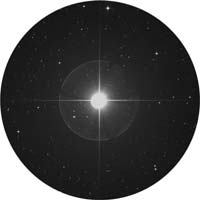 Tonight let’s honor the 1891 birth on this date of Helen Sawyer Hogg, who cataloged distances to variable stars in globular clusters. Although it’s too bright to globular hunt tonight, we can start with our eyes on Delta Ophiuchi (RA 16 14 20 Dec +03 41 39), another undiscovered gem. Known as Yed Prior (the ‘‘Hand’’), look for its optical double Epsilon to the southeast, handily named Yed Posterior. Now have a look at this area in binoculars or a telescope, using absolutely minimum power. Delta Ophiuchi is 170 light-years from us, while Epsilon is 108. But look at the magnificent field they share. Stars of every spectral type are together in an area of sky that could easily be covered by a small coin held at arm’s length. Enjoy this fantastic field, from the hot blue youngsters to the old red giants!
Tonight let’s honor the 1891 birth on this date of Helen Sawyer Hogg, who cataloged distances to variable stars in globular clusters. Although it’s too bright to globular hunt tonight, we can start with our eyes on Delta Ophiuchi (RA 16 14 20 Dec +03 41 39), another undiscovered gem. Known as Yed Prior (the ‘‘Hand’’), look for its optical double Epsilon to the southeast, handily named Yed Posterior. Now have a look at this area in binoculars or a telescope, using absolutely minimum power. Delta Ophiuchi is 170 light-years from us, while Epsilon is 108. But look at the magnificent field they share. Stars of every spectral type are together in an area of sky that could easily be covered by a small coin held at arm’s length. Enjoy this fantastic field, from the hot blue youngsters to the old red giants!
Sunday, August 2, 2009 – Today we celebrate the official adoption of Greenwich Mean Time (GMT) in 1880. Tonight take time to head north of Sinus Iridum, across Mare Frigoris and northeast of the punctuation of Harpalus, and revisit the grand crater J. Herschel.
Although it looks small because it is seen on the curve, this wonderful old walled plain named for John Herschel contains some very tiny details. Its southeastern rim forms the edge of Mare Frigoris, and the small (24 kilometers) crater Horrebow dots its southwestern edge. The crater walls are so eroded with time that not much remains of the original structure. Look for many very small impact craters dotting J. Herschel’s uneven basin and exterior edges. Why return to a previous study? If you can spot the small central crater C, you are resolving a feature only 12 kilometers wide from some 385,000 kilometers away!
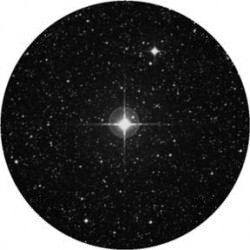 While we’re out, let’s have a look at another astounding system called 36 Ophiuchi, located about a thumb-width southeast of Theta (RA 17 15 20 Dec +26 36 10). Situated in space less than 20 light-years from Earth, even small telescopes can split this pair of 5th magnitude K-type giants—stars very similar to our own Sun. Larger telescopes can pick up the C component as well. Be sure to mark your lists with both of your observations tonight, because J. Herschel is a Lunar Club Challenge, and 36 Ophiuchi is on many doubles’ challenge lists.
While we’re out, let’s have a look at another astounding system called 36 Ophiuchi, located about a thumb-width southeast of Theta (RA 17 15 20 Dec +26 36 10). Situated in space less than 20 light-years from Earth, even small telescopes can split this pair of 5th magnitude K-type giants—stars very similar to our own Sun. Larger telescopes can pick up the C component as well. Be sure to mark your lists with both of your observations tonight, because J. Herschel is a Lunar Club Challenge, and 36 Ophiuchi is on many doubles’ challenge lists.
If you haven’t taken the “time” to hunt down the impact site on Jupiter, then you’d better! Even if it isn’t visible while you’re out observing, you can always enjoy all the great features Jupiter has to offer. Who knows? You might catch a shadow transit… Or just enjoy the waltz of the Galiean moons as they shuttle around the scarred giant. Remember to use as much magnification as possible when looking for the impact site! While videos like Joe Brimacombe’s (seen here) make it very clear, viewing through a small telescope isn’t quite that crisp and easy. The details become much more pronounced in photographs than what can be seen visually, so extra magnification doesn’t harm… It actually helps to dim Jupiter and will pick up the contrast for you. But, take a look at what a Takahashi Mewlon can do!
Absolutely Tak sharp… For now? Wishing you clear and steady skies!
This week’s awesome images are (in order of appearance): Februrary 18, 2009 Antares Occultation Movie (credit – Joe Brimacombe), Montes Teneriffe and Montes Recti (credit—Wes Higgins), Gibbous Moon (credit—Greg Konkel), Delta Ophiuchi (credit—Palomar Observatory, courtesy of Caltech), Crater J. Herschel (credit—Alan Chu), 36 Ophiuchi (credit—Palomar Observatory, courtesy of Caltech) and Jupiter Impact Movie by Joe Brimacombe. We thank you so much!!

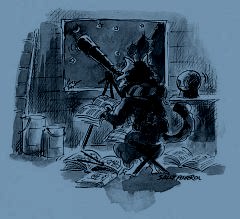
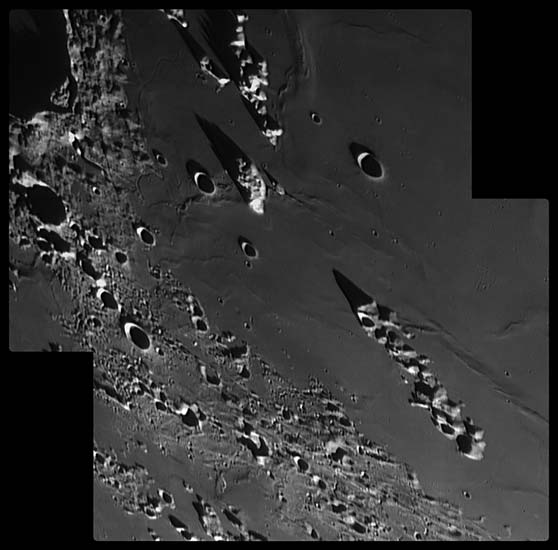
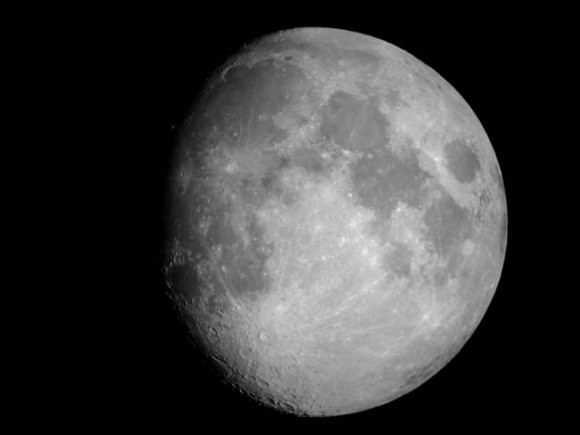
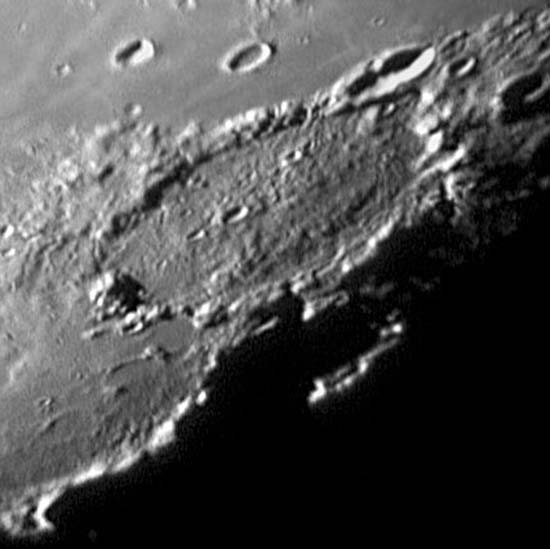
nicely done. i forwarded this to my moon-obsessed friend.
I would love to say I have seen the impact site on Jupiter – however we have had nothing but cloud.
But hey it is the English Summer.